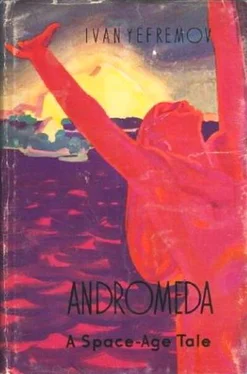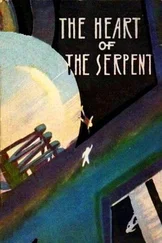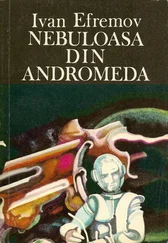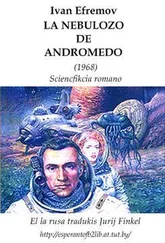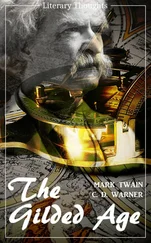Ivan Yefremov - Andromeda (A Space-Age Tale)
Здесь есть возможность читать онлайн «Ivan Yefremov - Andromeda (A Space-Age Tale)» весь текст электронной книги совершенно бесплатно (целиком полную версию без сокращений). В некоторых случаях можно слушать аудио, скачать через торрент в формате fb2 и присутствует краткое содержание. Город: Moscow, Год выпуска: 1959, Издательство: FOREIGN LANGUAGES PUBLISHING HOUSE, Жанр: Фантастика и фэнтези, на английском языке. Описание произведения, (предисловие) а так же отзывы посетителей доступны на портале библиотеки ЛибКат.
- Название:Andromeda (A Space-Age Tale)
- Автор:
- Издательство:FOREIGN LANGUAGES PUBLISHING HOUSE
- Жанр:
- Год:1959
- Город:Moscow
- ISBN:нет данных
- Рейтинг книги:5 / 5. Голосов: 1
-
Избранное:Добавить в избранное
- Отзывы:
-
Ваша оценка:
- 100
- 1
- 2
- 3
- 4
- 5
Andromeda (A Space-Age Tale): краткое содержание, описание и аннотация
Предлагаем к чтению аннотацию, описание, краткое содержание или предисловие (зависит от того, что написал сам автор книги «Andromeda (A Space-Age Tale)»). Если вы не нашли необходимую информацию о книге — напишите в комментариях, мы постараемся отыскать её.
Andromeda (A Space-Age Tale) — читать онлайн бесплатно полную книгу (весь текст) целиком
Ниже представлен текст книги, разбитый по страницам. Система сохранения места последней прочитанной страницы, позволяет с удобством читать онлайн бесплатно книгу «Andromeda (A Space-Age Tale)», без необходимости каждый раз заново искать на чём Вы остановились. Поставьте закладку, и сможете в любой момент перейти на страницу, на которой закончили чтение.
Интервал:
Закладка:
Astounded, Darr Veter caught in the blue sounds an urge towards ever more complicated rhythms and forms and thought that the primitive struggle of life against entropy could not be better expressed. Steps, dams, filters holding back the cascades that were falling to lower levels of energy…. To retain them for one moment and in that moment to live! So, so and so — there they were, those first splashes of the complicated organization of matter.
Blue arrows resolved into a round dance of geometric figures, crystal and lattice forms that grew more complicated to the accompaniment of various combinations of minor tercets, fell apart, were again combined and then suddenly dissolved in the grey twilight.
The third movement began with the measured tread of bass notes in time with which blue lanterns were lit and extinguished as they moved off into the void of infinite space and time. The surge of tramping basses increased, their rhythm grew faster until they merged into a broken, ominous melody. The blue lights were like flowers swaying on thin stems of fire — they bowed their heads sadly under the flood of low, thundering and blasting notes and were extinguished in the distance. But the lines of lights or lanterns became denser and their stems were thicker. Then two fiery strips marked a road leading into immeasurable blackness and the resonant golden voices of life floated into the immenseness of the Universe, warming with a glorious warmth gloomy, indifferent, ever-moving pattenr. The dark road changed to a river, a gigantic stream of blue flames in which splashes of multicoloured fire made pattern that was constantly changing and becoming more intricate.
The higher combinations of rounded, regular curves and spherical surfaces were of a beauty equal to that of the contradictory quartal chords, in the succession of which a complicated resonant melody increased rapidly, whirling more powerfully and expansively in the rhythmical advance of the low rumble of time.
Darr Veter’s head was in a whirl and he could no longer follow all the shades of music and colour and was able to grasp only the general outline of the gigantic idea. The blue ocean of high notes, pure as crystal, glowed with a beaming, unusually powerful, joyful and clear colour. The tone rose higher and higher and the melody itself began rotating furiously in an ascending spiral until it broke off in flight, in a blinding flash of fire.
The symphony was over and Darr Veter realized what he had been missing all these long months. He needed work that was closer to the Cosmos, closer to the tirelessly unwinding spiral of human urge forward into the future. He went straight from the music room to the telephone room and from there called the Central Employment Bureau of the northern living zone. The young clerk who had sent him to work in the mines was pleased when he recognized him.
“They called for you from the Astronautical Council this morning,” he said, “but I could not get in touch with you. I’ll put you through now.”
The screen grew blank and then the light came on again and Mir Ohm, the senior of the four secretaries of the Council, appeared. His face wore a very serious look and, Darr Veter thought, a look mingled with sadness.
“There has been a great catastrophe! Satellite 57 has perished! The Council is calling you for a most difficult job. I’ll send an ion-powered planetship for you. Be ready to leave!”
Darr Veter stood motionless in amazement in front of the already empty screen.
CHAPTER EIGHT
RED WAVES

The wide verandah of the observatory was open to the winds that brought the perfume of flowering plants from the hot African cost across the sea, a perfume that aroused an urgent yearning in a man’s soul. Mven Mass could not compose himself into the state of clarity and firmness, when no doubts remained, that was essential on the eve of a decisive experiment. Renn Bose had reported from Tibet that the Corr Yule installation had been reconstructed and was ready. The four observers on Satellite 57 had willingly agreed to risk their lives if that would help in carrying out an experiment such as Earth had never before known.
The experiment, however, was being mounted without the permission of the Council and without an extensive preliminary discussion of all possibilities. This made it seem like the secret manufacture of weapons in the darkest eras of man’s history and gave it a flavour of cowardly secrecy not common to people of today.
It is true that the great objective they hoped to reach seemed to justify the means, but… they had to remain pure in spirit! The old human conflict between the end and the means of its attainment had arisen: and the experience of thousands of generations teaches mankind that there is a certain boundary limiting the means to an end that must not be overstepped.
The case of Beth Lohn gave the African no rest. Thirty-two years before, one of Earth’s leading mathematicians, Beth Lohn, had discovered that certain signs of displacement in the interaction of strong power fields could be explained by the existence of parallel dimensions. He carried out a series of interesting experiments involving the disappearance of objects. The Academy of the Bounds of Knowledge found an error in his computations and produced an explanation of the observed phenomena that differed from his in principle. Beth Lohn, with his powerful mind hypertrophied at the expense of an underdeveloped sense of moral values and uninhibited desires, was a man of great strength and equally great egoism who decided to continue his experiments in his own way. To get convincing proofs he drew into the work courageous young volunteers who were willing to sacrifice themselves in the service of science. The people in Beth Lohn’s experiments disappeared as completely as the things had done and, contrary to the hopes of the ruthless mathematician, not one of them made his presence known from “the other side” of the other dimension. When Beth Lohn had sent a group of twelve people into “non-existence,” in other words had destroyed them, he was arraigned before the court. He succeeded in proving that he really believed his victims to be alive and somewhere in another dimension and that he had only acted with their consent; he was condemned to exile, spent ten years on Mercury and then, on returning to Earth, went to the Island of Oblivion, out of resentment for our world. Mven Mass felt that Beth Lohn’s story was very much like his own; there, too, a secret experiment undertaken for objectives rejected by science had been forbidden and this was an analogy that Mven Mass did not like.
In two days’ time there would be a transmission round the Great Circle and after that he would be free for eight days for the experiment!
Mven Mass threw back his head to look at the sky. The stars seemed brighter and nearer than usual. Many of them he knew by their ancient names, knew them as old friends — and were they not, indeed, the age-old friends of man that had shown him his ways, given him lofty ideas and encouraged him to dream?
A not very bright star inclining to the northern horizon was the Pole Star or Gamma Cephei. In the Era of Disunity the Pole Star had been in Ursa Minor, the Little Bear, but the revolution of the fringe of the Galaxy, and of the solar system with it, was in the direction of Cepheus. Cygnus, the Swan, one of the most interesting constellations in the northern sky, stretching through the Milky Way, had its long neck turned to the south. In this constellation there was a most beautiful binary star that the ancient Arabs had named Albireo. It was afterwards discovered that there were really three stars, the binary Albireo I and Albireo II, a huge blue star with an extensive planetary system. They were almost as far from us as Deneb, the huge star in the Swan’s tail with a luminosity equal to 4,800 of our suns. Only eight years before this a direct answer had been received from the inhabited worlds of the Deneb system to a message transmitted in the second year of the Great Circle Era. During the last transmission our trusty friend 61 Cygni had received a message of warning from Albireo II some 400 years after it had been sent but which was nevertheless of great interest. A famous Cosmic explorer from Albireo II whose name was transmitted in terrestrial sounds as Vlihh oz Ddiz, had been lost in the vicinity of the Lyra Constellation where he met one of the greatest dangers of the Cosmos, an Ookr star. Terrestrial scientists have placed these stars in class E so called in honour of Einstein, the greatest physicist of ancient days, who predicted their existence although it was long disputed; the limit for the mass of a star was even determined and given the name of the Chandrasekhar Limit. But that ancient astronomer based his calculations exclusively on the mechanics of gravitation and thermodynamics and did not take into consideration the intricate electromagnetic structure of the giant stars. It was precisely these forces that conditioned the existence of E stars that in size rival the huge red M class giants like Antares or Betelgeuse but their density is greater, something like that of our Sun. The terrific gravitation of such bodies prevented radiation so that light could not leave the star and travel through space.
Читать дальшеИнтервал:
Закладка:
Похожие книги на «Andromeda (A Space-Age Tale)»
Представляем Вашему вниманию похожие книги на «Andromeda (A Space-Age Tale)» списком для выбора. Мы отобрали схожую по названию и смыслу литературу в надежде предоставить читателям больше вариантов отыскать новые, интересные, ещё непрочитанные произведения.
Обсуждение, отзывы о книге «Andromeda (A Space-Age Tale)» и просто собственные мнения читателей. Оставьте ваши комментарии, напишите, что Вы думаете о произведении, его смысле или главных героях. Укажите что конкретно понравилось, а что нет, и почему Вы так считаете.
